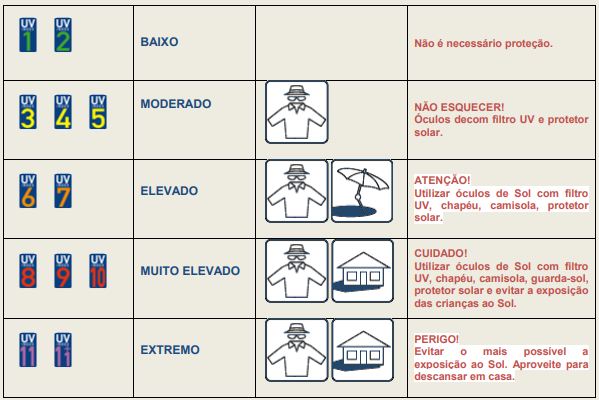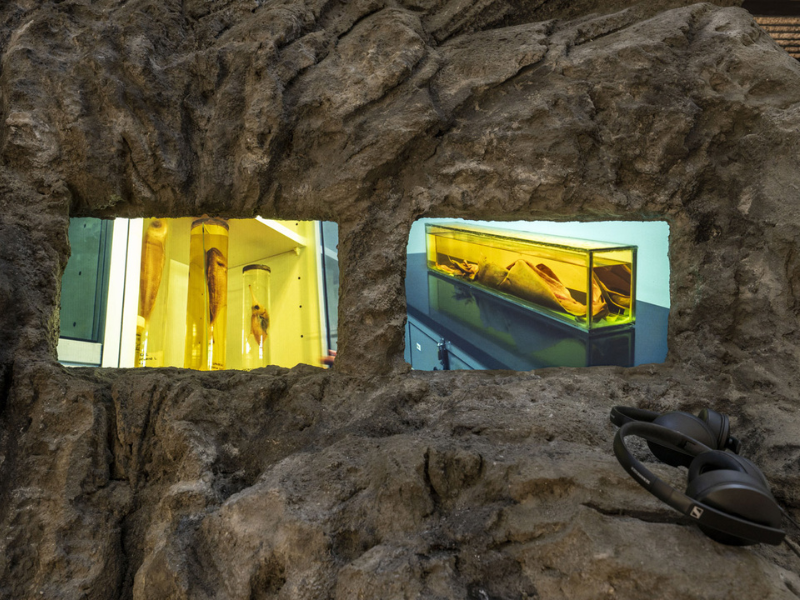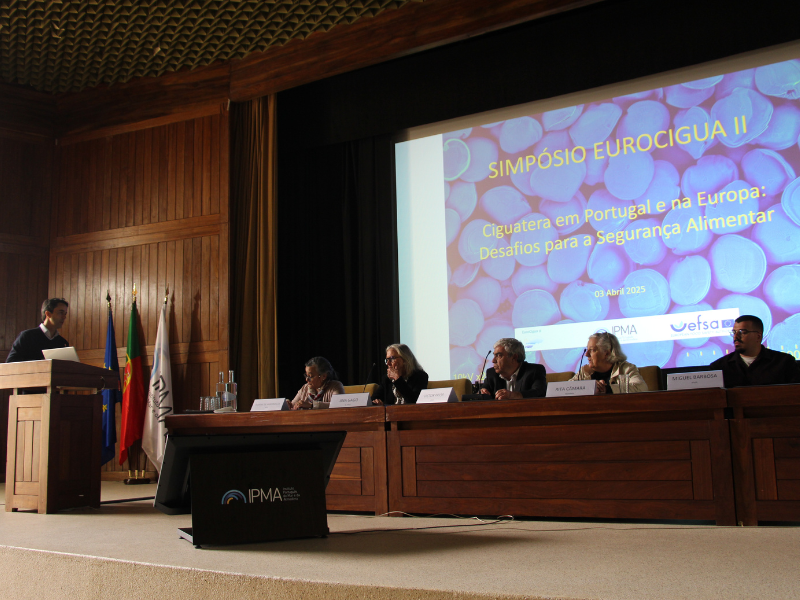News
-
Exhibition at Centro de Arte Moderna
-
Ciguatera in Portugal
-
Project for Cape Verde
CAUTION
Ultraviolet radiation | FAQ | Caution
Exposure to sunshine
Early in the 20th century it was found that exposure to sunshine prevented, and cure even cure, rickets. However, while small amounts of UV are beneficial and essential to D3 vitamin production, human exposure to solar radiation can have severe effects on health, namely for the skin, such as cancer and photo-aging, for the eyes, such as cataracts, pterygium and spinocelullar carcinoma of the conjunctiva, and for the immunity system.
The time for an erythema (sun burning) to form is the maximum time of exposure to sunshine with unprotected skin without the occurrence of the erythema. It can be assessed, for each type of skin, from the UV Index and the 1MED value for each type of skin.
The "red skin" (more frequently known as “scald”), resulting from exposure to sunshine, becomes visible after some hours, and the erythema occurs 3 to 5 hours after the exposure to ultraviolet radiation, reaching its maximum 8 to 24 hours and fading along 3 days. The dilatation of the capillaries in the exposed areas starts before the erythema becomes visible, and this occurs in the same way for children, teen-agers, adults and old people. Benign changes in the melanocytes can also occur as a result of an overexposure to UV during childhood or adolescence. Different from erythema is the tan, when the skin is exposed to ultraviolet radiation. Two tan reactions can be distinguished: one is related with the immediate absorption of UV radiation by the melanin in the skin, which gives it a dark hue, fading a few hours after the end of the exposure; another reaction is the darkening of the skin, which requires about 3 days to develop. It is a more persistent tan and results in an intensification of the pigment production. In the former case, the most effective radiation is UVA; in the latter it is UVB. Another effect of the exposure to UVB is the increase in the thickness of the epidermis, which will contribute to the attenuation of the UV radiation entering into the deepest skin layers. A moderate exposure to UVB keeps the capability of the skin to tolerate new exposures.
Eye Protection
Contrarily to human skin, which partly adapts (thickness and tan) to UV radiation, the human eye has no adaptation mechanisms. More frequent eye diseases, at external level, are photokeratitis and photoconjunctivitis, which can occur between 0.5 and 24 hours after a long exposure to intensive solar radiation, often in a highly reflective environment. An example of this is “snow blindness”. Also pterygium is a degenerative disease that affects the external part of the eyes. Various studies also hint that UV radiation is a risk factor in the development of human cataract, which results from increased opacity of the eye lens. UV radiation induces the suppression of the immunity system, favouring the progression of infections caused by viruses, bacteria and fungi.
The eyes should be protected through glasses with UVA e UVB filters. In accordance with guidance E. C. 89/686/EEC, manufacturers must mention the class of lens protection for visible light and ultraviolet. For general use, class 3 is adequate, while for high risk like in mountain climbing or nautical sports class 4 is recommended. On the other hand, due to lateral exposure, it is advisable to use side protections on the glasses. This is especially important in the case of children, as the UV radiation transmittance through the eyes is higher for children than for adults – child’s retina is less protected. Thus, sunglasses with UV protection filters should be used.
Skin Protection
The best protection for the skin consists in wearing appropriate clothes (shirt, trousers, hat). The clothes transparent to UV radiation available in the market should be duly identified as such. Skin zones not covered by clothes should be protected by a solar protection containing UVA e UVB filters. For the first times of exposure to the sun, a Solar Protection Filter (SPF) near 30 is recommended.
Babies and children require special care. It should be noted that the effect of solar protection depends not only on its quality, but also on its proper use, in accordance with the instructions by the manufacturer. A solar protection with at least SPF 15 should be copiously applied every 2 hours for a protective effect to be obtained. It should also be applied before sun exposure, as well as after bathing in the sea or swimming pool. A correct use of solar protection can prevent erythema, cancer and photo-aging.

There is a guide to the use of protection measures against different values of UV Index and for skins of a sensitive kind (type I and babies) and more tolerant ones (type III). This guide is only an example of an easy way to provide public awareness and information.
Besides skin type, possible cutaneous or ocular reactions can affect the efficiency of protective measures. Photosensitivity reactions may be due to a number of internal or external agents. Some medicine products, such as psoralen, porphyrin, coal tar, antibiotics or several types of inflammatory agents, anti microbiotic products, fragrances, plants, etc., can cause erythema even with a low UV amount.
Choosing and Using Solar Protection
Solar protection reduces the transmission of UV radiation into the skin. The solar protection factor (mentioned in the solar protection products available in the market) is based on the ratio between the amounts of UV radiation necessary for sun burning to occur, with and without solar protection. It is important to know that this protective effect does not increase linearly with the SPF. For instance, an SPF 10 reduces the UVB radiation in nearly 90%, an SPF 20 in nearly95%, and an SPF 30 will reduce just a little more.
Taking into account the damage caused by the UVA radiation, checking the product for the existence of UVA filters is recommended: while there is no standard method to evaluate the UVA radiation filters in solar protection, in products having UVA filters their presence is mentioned on the package.
Anyway, the solar protection should not be used to prolong the time of exposure to sunshine, but rather to limit the damage resulting from such exposure. This is why solar protection is applied on parts uncovered by clothes, especially on sensitive areas, such as nose, neck, shoulders, instep, etc. For the choice of the most adequate solar protection, the SPF values are recommended according with the different types of skin and values of UV Index
| Solar Protection Factors recommended for different types of skin and UV Index | ||||
|---|---|---|---|---|
| Ultraviolet Index | Types of skin | |||
| 1 to 3 | 4 to 6 | 7 to 9 | above 10 | |
| 1 a 3 | 30+ | 30+ | 15+ | 15+ |
| 4 a 6 | 30+ | 30+ | 30+ | 30+ |
| 7 a 9 | 50+ | 50+ | 30+ | 30+ |
| greatter than 10 | 50+ | 50+ | 50+ | 30+ |




